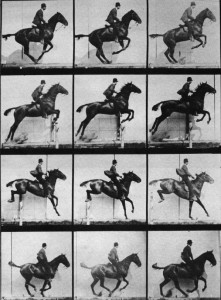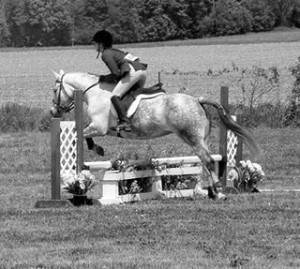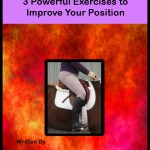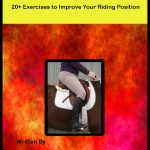Rushing your fences – Can he be cured?
Watching a hunter round should be a joy. It should not leave you white knuckled clutching the seat of your chair. A well executed round will reveal a horse and rider seamlessly connect the fences in a rhythmic pattern. A well ridden

jumper round has a big stride but can make handy turns and tight combinations. Rushing will destroy and even prevent a placing in a class.
What’s the Rush?
Few horses when learning to jump start out rushing. It is something that the riders almost ‘put’ into their horses. Horses start to rush for, usually, one of the following reasons:
- The horse is uncomfortable – Consider looking into the horses mouth, back, legs or hooves. If there is pain or some sort of perceived pain the horse may rush to get the jumping over with so the pain will stop.
- Previous training – Your horse may be rushing due to how it was previously trained. If a good event horse was strong, brave and fast and you purchase him as a hunter, expect that horse to be strong, brave and fast in the hunter ring. Don’t expect him to be able to understand that he doesn’t have to go fast anymore.
- The Rider – Most horse issues can be traced back to the rider. A rider that is nervous or unsure of the distances often telegraphs this to the horse and the horse responds. Some horses are more sensitive than others and so if a rider clamps the legs and leans forward it will signal to the horse to go… fast.
How to Fix It?
If your horse is sore remove the source of the soreness. Check the bit, mouth, teeth and fit of the bridle to ensure that nothing is pinching or that the horse’s teeth need to be floated.
Saddle fit is huge and can cause major back soreness. If you are unsure of the correct fit of the saddle then get an expert in to help. Along with saddle fit is position in the tack. Falling back into the saddle will only add to the pain your horse is feeling. Get a secure leg and keep your seat out of the saddle while jumping.
An older horse with stiff and sore joints may require some veterinary care to prevent any more soreness. Have a vet give the horse an examination to rule out lameness or injury.
Start at the Beginning
The fundamental foundation for hunters, jumpers, equitation, park, reining, etc. is rhythm. To begin to jump, trot over a simple set of cross rails and maintain rhythm. Canter a single pole and maintain rhythm. If you notice a difference in pace slow down gradually and stop. Once the horse has stopped then resume the rhythm again.

Don’t intimidate the horse by putting up big fences. Start small and gradually work up to a small vertical. If the horse rushes, it may be the size of the jump and a smaller jump should be used. Before setting up an oxer practice single verticals until they are mastered and can be jumped from a trot or canter without any loss of rhythm.
Read more at Suite101: Rushing Fences – Can He be Cured?: Some Reasons for the Rushed Jumps http://horse-competitions.suite101.com/article.cfm/rushing_fences_can_he_be_cured#ixzz0fALun3xm
 Try these three powerful exercises to get strengthen your position.
Try these three powerful exercises to get strengthen your position.

Hi, this is a comment.
To delete a comment, just log in and view the post's comments. There you will have the option to edit or delete them.
Thanks for the article. How you ride your horse has everything with how it will react. Thanks for the article.
Don’t intimidate the horse by putting up big fences. Start small and gradually work up to a small vertical.